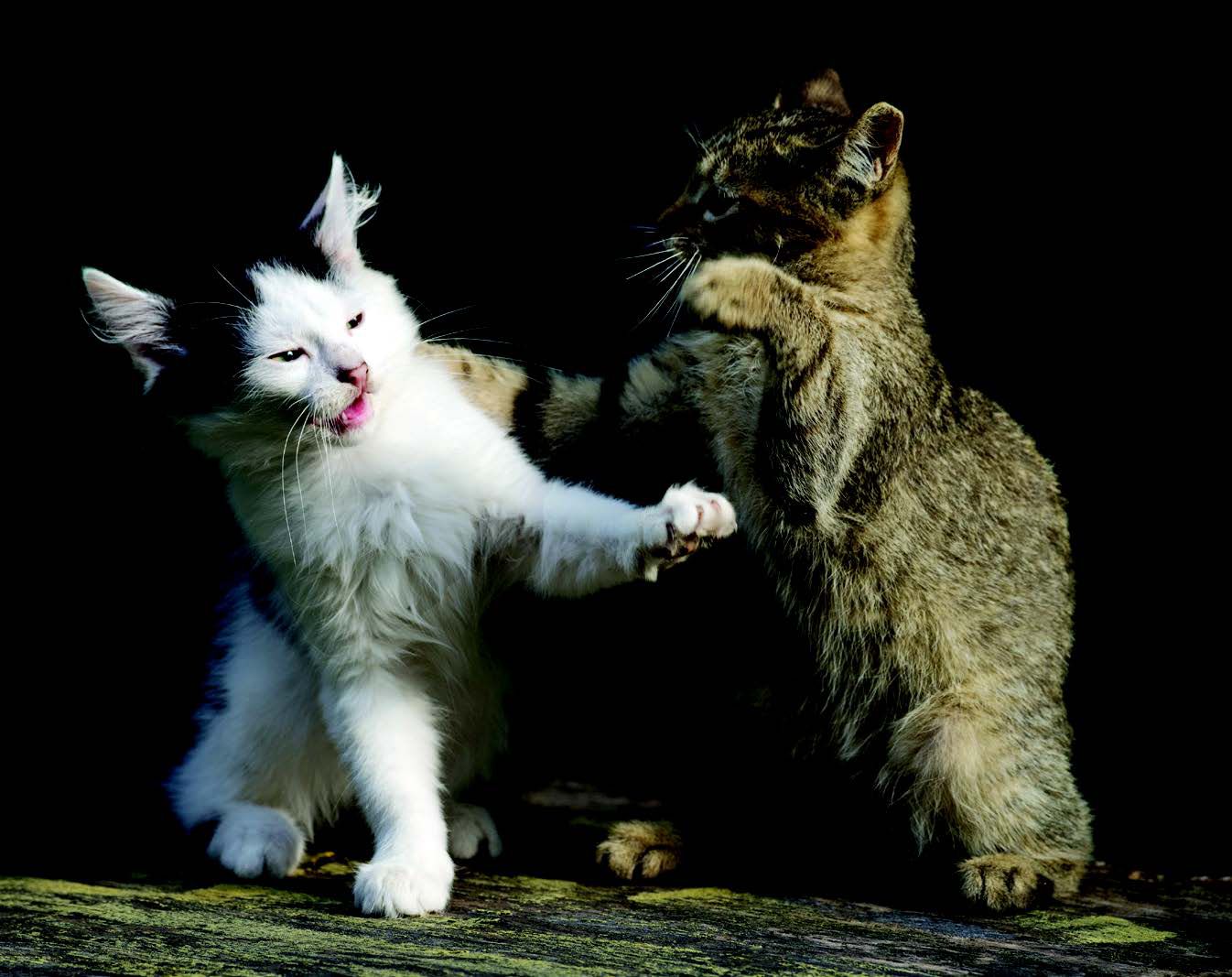Resource guarding is fairly common in multi-cat households, and most people have experienced it with their cats. Yet in our cat behavior practice, we have found that many people don’t know the term for it, nor what causes it to happen, let alone what to do about it.
Why it happens
Cats who have spent a great deal of time homeless or in shelters, especially those who have been deprived of food in the past, are most likely to resource guard. This behavior usually happens when there is a perceived lack of resources for the cats, even if there are plenty.
Usually there is also an underlying stress component that triggers this type of behavior. Often, we will see it happen by the resident cat when another cat enters the household. A new cat may also exhibit guarding if he has come from a situation of abandonment or lack of food and water. Feline insecurity can also cause your cat to feel stressed by any household changes, such as new people entering (new spouse or roommate) or by people leaving the household (divorce, kids leaving for college).
One of my cats, Smoochy, is very protective of her time with me. If any other cats try to come near me when Smoochy is on my lap, she will swat at them. Before swatting, she will growl and often “bark” at the other cat. When she’s on my lap, the other cats know to stay away until she leaves. When she does try to bully the other cats, I simply set her down on the floor and walk away. She’s learning that her guarding of my lap equals removal of my attention, so she’s getting better about sharing me.
What it looks like
Guarded resources can be anything from toys and food to places and people. Cats exhibit guarding of resources by:
1. Hissing to warn others to stay away
2. Swatting at other cats and perhaps even their human to stay away
3. Literally blocking the other cat’s access to an item or place to prevent other cats from getting near
4. Scratching items to claim as territory
5. Spraying or peeing on items (or people)
Resources your cat might guard
✤ Food
✤ Toys
✤ People
✤ Litter boxes
✤ Cat trees
✤ Cat scratchers
✤ Napping spots
✤ Anything else they decide is “theirs”
What to do
If you notice one of your cats is guarding resources from the other(s), there are things you can do to prevent the behavior from escalating into constant bullying or fighting. Nipping these behaviors in the bud is the key to preventing disagreements among your cats and keeping peaceful coexistence.
Here are a few tips:
✤ Prevent food bowl sharing by putting a bowl down for each cat.
✤ Remove lids from litter boxes, so one cat cannot trap the other in the box.
✤ Provide more than one litter box area so the bullied cat has another option if one litter box area is being guarded.
✤ Give each cat one-on-one time with you, as well as group play experiences.
✤ Provide enough toys, cat beds, cat trees and cubby holes that each cat can claim one as theirs.
✤ Try flower essences as a natural choice for calming stress in both the bully and the bullied cat. Two to try are Friendly House Cat and Cat Calm Stress Reducing Liquid Formula.
✤ Give your cats praise whenever they are together and no bullying or guarding happens.
✤ If needed, visit your veterinarian if your cats need anti-anxiety assistance with medication.
Living in harmony with multiple cats can be done. I live with 18 cats and rarely do I see resource guarding in my house. Providing enough toys, food and love for all cats goes a long way toward correcting, or even preventing, bullying and resource guarding.
Now that you know what to look for, you’ll be able to bring harmony to your own cat household and prevent guarding behaviors before they become too much of a habit.
Help your cats adapt
When bringing a new cat home to your resident cat, prepare ahead of time with the following steps.
- If it’s possible, do some scent swapping before the new cat enters your household or at the very least before introductions happen.
- Provide enough toys and bedding areas for both cats to enjoy.
- Feed your cats in separate bowls instead of having them share one plate.
- Give your resident cat extra praise and love when in the company of the newbie, so he knows he has not been replaced.
- Mutual playtime will help the cats become friends, as long as time and attention from you (and treats!) is distributed evenly and both also get special alone time with you.
